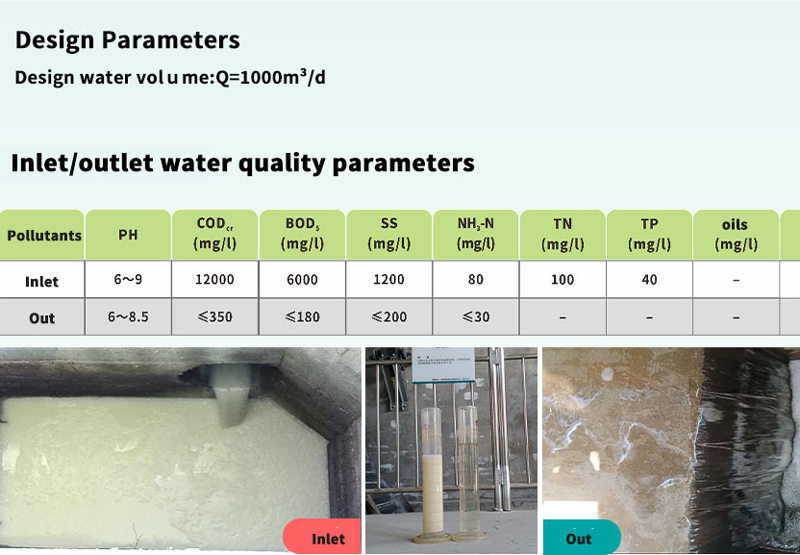Significance of Settling Ratio (SV) in Water Treatment
Every day, the sewage treatment plant's operating staff is required to perform the sedimentation ratio and record the results in the daily report. The sedimentation ratio experiment procedure is actually quite significant. Often, we may infer the biochemical system's operational condition from a few small facts. By promptly analyzing and making decisions based on anomalous occurrences, we may modify processes and bring the biochemical system back to optimal functioning condition. Because the experiment is so crucial, it is necessary that we revisit the concept of sedimentation ratio in order to monitor and document the minute aspects of the process, identify issues as soon as possible, and make necessary modifications to guarantee optimal biochemical pool performance.
THE SIGNIFICANCE OF SLUDGE SETTLING RATIO
The mixed liquid at the outlet of the aeration tank is placed in a 1000ml measuring cylinder. After 30 minutes of static sedimentation, the volume of the settled activated sludge accounts for the percentage (%) of the entire sampling volume. The definition makes people mistakenly believe that the final result is important, but the process is also important. Sedimentation ratio is a very important parameter in the operation of the sewage treatment plant, which can be related to the judgment of many parameters such as SVI, DO, MLSS, F/M, biological phase, sludge age, and return ratio.
The sedimentation ratio is easy to detect. The sedimentation ratio can simulate the effect of the secondary sedimentation tank in the biochemical system. During this experiment, the sludge sedimentation process of the system can be observed. The various stages of the sedimentation process provide the possibility of early detection of biochemical system problems. In addition to interference factors, the sedimentation state of each stage is particularly important. At the initial stage of sampling, the mixed liquid is in a completely mixed state. The initial flocculation state can quickly see the clear interstitial water of the flocs. The free sedimentation state can see the sedimentation process. The group sedimentation state observes the overall sinking after the flocs accumulate. In the compression sedimentation process state, the sedimentation process is no longer obvious and is in a gradual compression stage.

KEY POINTS TO OBSERVE WHEN DOING SEDIMENTATION RATIO EXPERIMENTS
1. Carefully observe whether there are oily substances, scum, and bubbles on the surface of the supernatant, and gently fan the mouth of the measuring cylinder with your hand to smell the odor.
① The oily substances are usually not obvious, pay attention to carefully observe the hazy oily substances covering the liquid surface; the reasons for the existence of oily substances are that the influent contains mineral oil or emulsified oil, detergent and defoaming agent; too little influent, relatively excessive aeration, the disintegration of activated sludge; the aging and disintegration of activated sludge.
② The scum is usually brown-yellow and black floccules floating on the liquid surface. The reasons for its existence are: excessive aeration; aging of activated sludge; caused by oily substances on the liquid surface; sludge poisoning; filamentous bacteria expansion; activated sludge lack of oxygen.
③ Bubbles usually appear as rows of bubbles between the liquid surface and the measuring cylinder (larger) or bubbles attached to the scum on the liquid surface (smaller). Causes: excessive aeration; aging of activated sludge; caused by oily substances on the liquid surface; caused by denitrification; filamentous bacteria expansion.
④ The smell is smelled at the initial stage of sedimentation. If the earthy smell is strong, the activity is high; if the acid and alkali are strong, the pH of the mixed liquid is abnormal; if the odor is strong, it may be lack of oxygen; other odors may be considered to be caused by the inflow of special industrial wastewater.
2. Carefully observe the whole sedimentation, speed, interstitial water, flocculent state and other aspects during the sedimentation process.
① In the stage from free sedimentation to group sedimentation, the whole sedimentation is manifested by clear mud-water interface and overall sedimentation. Reasons: The lower the activity of activated sludge, the better; the higher the sludge load, the better; excessive aeration is poor; the whole sedimentation of poisoned sludge is poor; the filamentous bacteria expansion has good whole sedimentation but slow sedimentation speed.
② The speed is divided into initial flocculation speed; free sedimentation and group bearing speed; mud-water interface formation speed. Reasons: The higher the activity of activated sludge, the better; the higher the aging degree of sludge, the faster it ages; whether the sludge is poisoned can be fast or fast; the higher the activated sludge load, the slower it is; the filamentous bacteria expand slowly; the sludge concentration is too early to precipitate; the higher the inert matter content, the faster it is; water temperature and disturbance.
③ After the flocs are formed, the water body conditions between the flocs, clarity and particulate matter. Reasons: excessive aeration increases and does not flocculate fine particles; activated sludge is activated and aged and decomposes; the sludge load is too high and the mixed liquid is turbid; the filamentous bacteria expand with high clarity.
④ The floc state is the particle size, floc activity direction and floc color after flocculation. Reasons: excessive aeration makes the flocs loose; the activated sludge aging flocs are coarse and dark in color; the activated sludge load is too high to cause the formation of fine flocs; the filamentous bacteria expand with fine flocs.
3. Carefully observe the clarity, particles, interstitial water, wall hanging and other phenomena of the supernatant.
① Clarity is the overall color and turbidity of the supernatant. Performance and reasons: The higher the sludge load, the worse it is; the worse it is when the aeration level is too high; the sludge is poisoned and the sedimentation is poor; the supernatant is clear due to the expansion of filamentous bacteria.
② The number of suspended particles in the supernatant. Reason: The older the sludge is, the more particles it has; whether the sludge is poisoned and turbid with small scattered particles; the higher the activated sludge load, the more turbid it is; the higher the inert content, the more turbid it is.
③ The clarity of the water between the scattered particles. Reason: The water between the large particles is still visible due to excessive aeration; the interstitial water of the activated sludge is clear when it is aged; the interstitial water is turbid when the sludge load is too high; the interstitial water of the sludge is turbid when it is poisoned.
④ There are activated sludge floc particles on the wall of the measuring cylinder. Reason: The activated sludge is aged; excessive aeration.

4. Carefully observe the compactness, color, felting, bubbles, etc. of the sediment.
① Compactness is the final density of the sediment. Reasons: The more inert matter, the denser it is; the lower the sludge load, the denser it is; the worse it is if the aeration level is too high; whether the sludge is poisoned, fine and dense; the expansion of filamentous bacteria varies with the expansion degree.
② The color depth, gloss, and brightness of the sediment. The higher the activity of the activated sludge, the lighter the color; the older the sludge, the darker the color and dull; the poisoned sludge has a darker color; the higher the activated sludge load, the lighter the color; the filamentous bacteria expand light and white; the higher the sludge concentration, the darker the color; the denitrified sludge has a brighter color.
③ After sedimentation, the flocculation of the sludge is further enhanced, and the non-compressed part of the surface will enhance its adsorption. Reasons: The normal state of activated sludge has moderate felting; the performance is obvious when the activated sludge is over-aged; the sludge is not felting when it is poisoned or overloaded.
④ There are bubbles in the sedimentation flocs. Causes: tiny bubbles can be seen after excessive aeration and sedimentation; filamentous bacteria expand; viscosity increases after aging of activated sludge; activated sludge is released after denitrification and stirring; small bubbles expand at high temperature after sampling. From the above phenomena and reasons, we can know that in the sedimentation ratio experiment, observing and recording the phenomena and details of the sedimentation process can help us know earlier that the biochemical system is in good operating condition, make analysis and judgment early, and make timely process adjustments, which is conducive to the biochemical system to operate in the best state.











